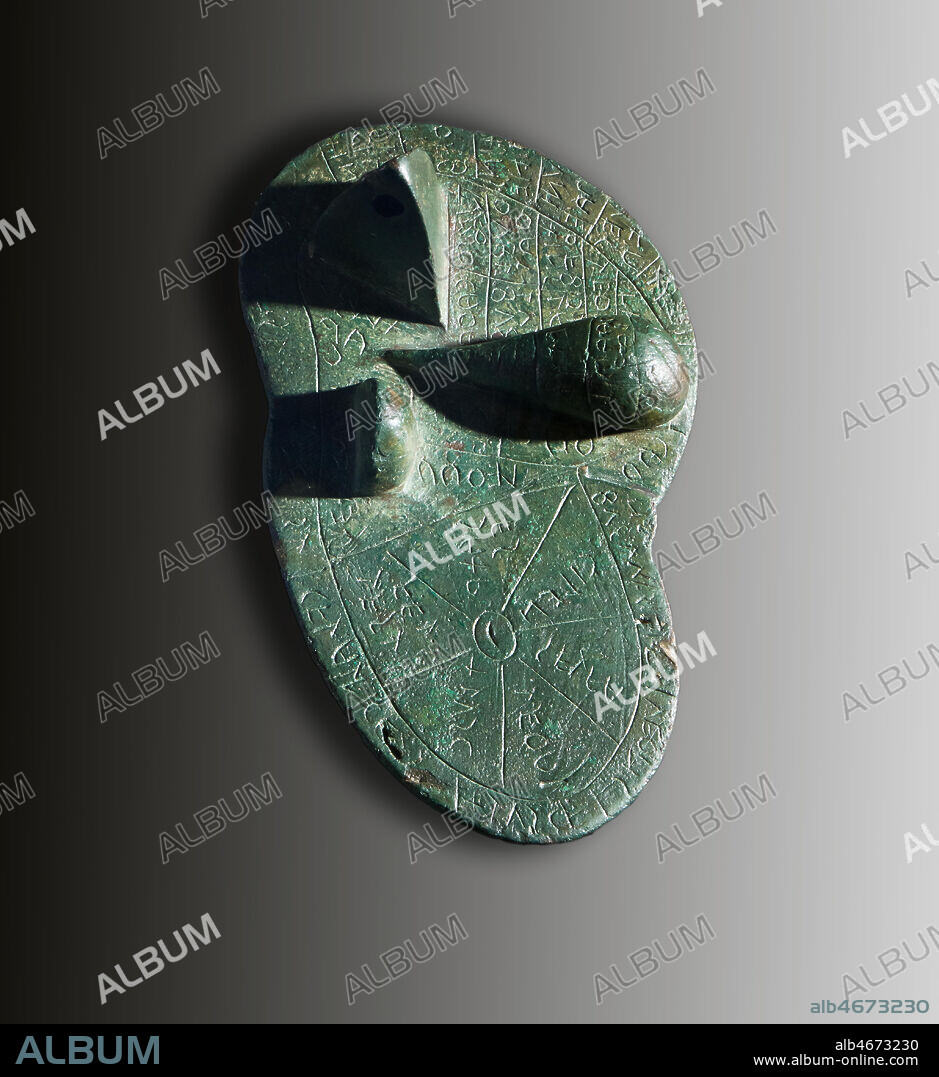alb4673230
Piacenza, Palazzo Farnese, Municipal Museums: Etruscan Liver. The Liver of Piacenza is an Etruscan artifact found in 1877, near Gossolengo, in the province of Piacenza. It is a life-sized bronze model of a sheep's liver covered in Etruscan inscriptions (TLE 719), measuring 126 mm by 76 mm by 60 mm and dated to the late 2nd century BC, i.e. a time when the Piacenza region would already have been Latin-dominated.. The liver is subdivided into sections for the purposes of performing haruspicy (hepatoscopy). The outer rim of the Piacenza liver is divided into 16 sections; since according to the testimony of Pliny and Cicero, the Etruscan divided the heavens into 16 astrological houses, it has been suggested that the liver is supposed to represent a model of the cosmos, and its parts should be identified as constellations or astrological signs.

|
Añadir a otro lightbox |
|
Añadir a otro lightbox |



¿Ya tienes cuenta? Iniciar sesión
¿No tienes cuenta? Regístrate
Compra esta imagen

Descripción:
Ver traducción automática
Piacenza, Palazzo Farnese, Municipal Museums: Etruscan Liver. The Liver of Piacenza is an Etruscan artifact found in 1877, near Gossolengo, in the province of Piacenza. It is a life-sized bronze model of a sheep's liver covered in Etruscan inscriptions (TLE 719), measuring 126 mm by 76 mm by 60 mm and dated to the late 2nd century BC, i.e. a time when the Piacenza region would already have been Latin-dominated.. The liver is subdivided into sections for the purposes of performing haruspicy (hepatoscopy). The outer rim of the Piacenza liver is divided into 16 sections; since according to the testimony of Pliny and Cicero, the Etruscan divided the heavens into 16 astrological houses, it has been suggested that the liver is supposed to represent a model of the cosmos, and its parts should be identified as constellations or astrological signs.
Crédito:
Album / Ghigo Roli
Autorizaciones:
Modelo: No - Propiedad: No
¿Preguntas relacionadas con los derechos?
¿Preguntas relacionadas con los derechos?
Tamaño imagen:
4096 x 4467 px | 52.3 MB
Tamaño impresión:
34.7 x 37.8 cm | 13.7 x 14.9 in (300 dpi)
 Pinterest
Pinterest Twitter
Twitter Facebook
Facebook Copiar enlace
Copiar enlace Email
Email
